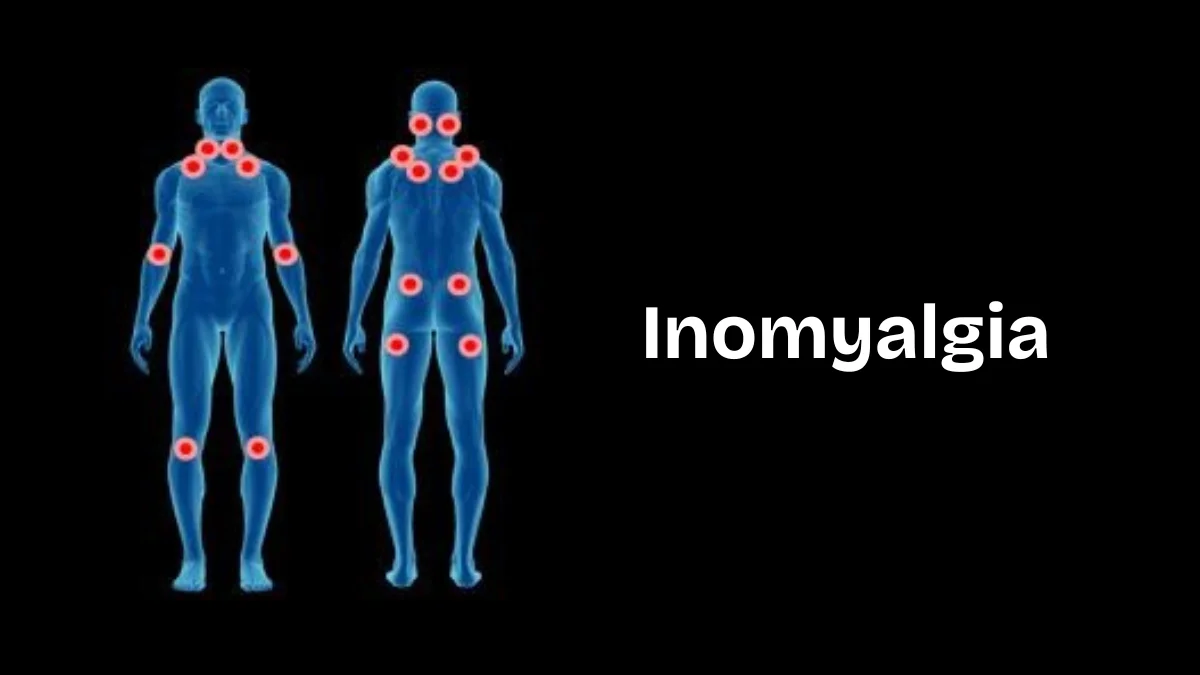Inomyalgia – Causes, Symptoms, and Effective Management Options
When chronic muscle pain becomes a persistent burden, finding the right diagnosis can be frustrating. One term gaining more attention in recent times is inomyalgia. While not as widely recognized as fibromyalgia, it refers to a condition involving deep muscular discomfort, fatigue, and stiffness. Understanding inomyalgia is important for those who struggle with unexplained, long-lasting pain.
In this article, we’ll break down what inomyalgia is, its symptoms, causes, potential overlaps with other pain syndromes, and the most effective ways to manage it.
What Is Inomyalgia?
Inomyalgia is considered a musculoskeletal condition that causes chronic muscle pain, tenderness, and fatigue. Unlike acute pain caused by injury, inomyalgia pain tends to linger for months and is often dull, deep, and widespread. It might be more noticeable during physical activity or after long periods of rest.
Although inomyalgia is not formally classified in many major medical textbooks, it is sometimes used interchangeably or confused with conditions such as myalgia, fibromyalgia, or myofascial pain syndrome. The key difference lies in the location and intensity of the pain, as well as its persistence over time.
Common Symptoms of Inomyalgia
The signs of inomyalgia can vary among individuals, but the most frequently reported symptoms include:
-
Deep muscle aching or soreness
-
Fatigue or general lack of energy
-
Muscle stiffness, especially in the morning
-
Tenderness when pressure is applied to certain areas
-
Difficulty sleeping or non-restorative sleep
-
Limited range of motion due to muscle tightness
-
Occasional headaches or neck pain
In some cases, people also experience mood swings, anxiety, or mild cognitive disturbances, often referred to as “brain fog.” This overlap with other chronic pain syndromes can make diagnosis more challenging.
Possible Causes of Inomyalgia
While there is no single cause identified for inomyalgia, several contributing factors may play a role:
1. Muscle Overuse
Excessive exercise, repetitive motion, or lack of adequate recovery can strain the muscles, leading to ongoing discomfort.
2. Stress and Tension
Mental and emotional stress frequently manifests physically. In chronic states, stress may cause muscles to tighten and spasm, resulting in lasting pain.
3. Poor Posture
Over time, poor posture can lead to misalignment and tension in various muscle groups. This may cause persistent pain and stiffness.
4. Sleep Disturbances
Lack of quality sleep impacts the body’s ability to heal. People who don’t sleep well are more likely to suffer from muscular pain.
5. Inflammation or Microtrauma
Minor injuries to muscle tissues, even those unnoticed, can contribute to chronic inflammation and discomfort if not properly addressed.
How Is Inomyalgia Different from Fibromyalgia?
Although both conditions share similarities, there are distinct differences worth noting:
| Feature | Inomyalgia | Fibromyalgia |
|---|---|---|
| Pain Location | Usually localized or deep muscular | Widespread across the body |
| Associated Symptoms | Primarily physical | Includes fatigue, mood issues, cognitive problems |
| Diagnosis | Less clearly defined | Recognized by major health bodies |
| Sleep Problems | May be present | Often a primary complaint |
| Treatment | Muscle therapy, physical adjustments | Multimodal approach: meds, therapy, lifestyle |
Understanding these distinctions can help patients and healthcare providers determine the most appropriate treatment plan.
Diagnostic Challenges
Inomyalgia isn’t always easy to diagnose. Many patients undergo extensive testing before receiving a label for their symptoms. Doctors may conduct:
-
Physical exams
-
Muscle tenderness assessments
-
Blood tests to rule out infections or autoimmune diseases
-
Imaging (e.g., MRI) to rule out structural damage
Because the term “inomyalgia” is not universally accepted in clinical guidelines, it’s essential to consult with specialists such as rheumatologists or pain management experts.
Treatment and Management Options
Managing inomyalgia requires a holistic approach. No single method works for everyone, so a combination of therapies is usually most effective:
1. Physical Therapy
Guided stretching, strengthening, and mobility work can help alleviate muscle tension and improve overall movement.
2. Massage and Myofascial Release
Therapeutic massage can ease tight muscles, reduce inflammation, and improve circulation.
3. Heat Therapy
Warm compresses or hot baths help relax sore muscles and enhance flexibility.
4. Exercise and Movement
Low-impact activities such as walking, swimming, or yoga can support long-term muscle health and reduce flare-ups.
5. Cognitive Behavioral Therapy (CBT)
CBT helps manage the psychological effects of chronic pain and may improve coping strategies.
6. Nutrition and Supplements
Some individuals report improvement with magnesium, omega-3s, or anti-inflammatory diets. A healthcare provider should guide supplement use.
7. Sleep Hygiene
Improving sleep habits can significantly reduce muscle pain over time. Avoid caffeine late in the day, establish routines, and create a restful environment.
Frequently Asked Questions
Is inomyalgia the same as fibromyalgia?
No. While they share similar symptoms like muscle pain and fatigue, inomyalgia tends to focus more on muscular issues, whereas fibromyalgia involves broader systemic symptoms.
Can inomyalgia be cured?
There is currently no cure, but with a consistent treatment plan, many people can manage their symptoms effectively and lead active lives.
What type of doctor should I see for inomyalgia?
Start with your primary care provider. You may be referred to a rheumatologist, neurologist, or pain specialist for further evaluation.
Can lifestyle changes help reduce symptoms?
Yes. Improvements in posture, stress management, diet, and sleep can have a significant impact on reducing chronic muscle discomfort.
Is medication necessary?
Not always. Many cases improve through non-pharmaceutical methods, although pain relievers or muscle relaxants may be used during flare-ups.
Final Thoughts
Inomyalgia may not be a household term, but for those experiencing lingering muscle discomfort, it’s a label that can bring clarity. While it remains loosely defined, understanding its symptoms and causes is the first step toward relief. More importantly, taking proactive steps such as physical therapy, lifestyle changes, and stress management can go a long way in improving daily function.
If you or someone you know is struggling with unexplained muscle pain, don’t ignore it. Seek a professional opinion, explore treatment options, and take charge of your well-being with informed choices.
